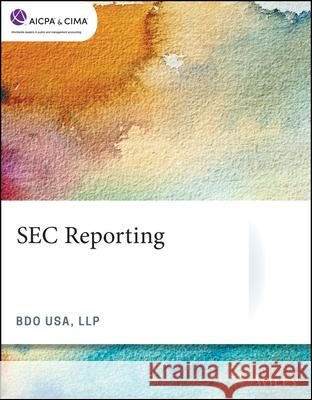SEC Reporting » książka
topmenu
SEC Reporting
ISBN-13: 9781119724421 / Angielski / Miękka / 2020 / 608 str.
Kategorie:
Kategorie BISAC:
Wydawca:
Wiley
Seria wydawnicza:
Język:
Angielski
ISBN-13:
9781119724421
Rok wydania:
2020
Numer serii:
000806701
Ilość stron:
608
Waga:
1.13 kg
Wymiary:
27.43 x 21.08 x 3.05
Oprawa:
Miękka
Wolumenów:
01
Dodatkowe informacje:
Glosariusz/słownik











